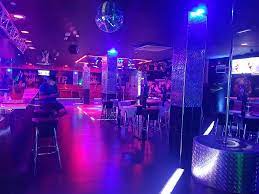The World of Literary Speculative Fiction
Literary speculative fiction, a genre that encompasses elements of science fiction, fantasy, and the supernatural, offers readers a unique and imaginative journey into worlds beyond our own. Unlike traditional genre fiction, literary speculative works often focus on character development, thematic depth, and experimental storytelling techniques.
One of the defining features of literary speculative fiction is its ability to explore complex ideas and societal issues through the lens of fantastical or futuristic settings. Authors in this genre use imaginative worlds and extraordinary concepts to delve into themes such as identity, power dynamics, ethics, and the nature of reality.
Notable literary speculative fiction authors include Margaret Atwood, who blends elements of dystopian fiction with social commentary in works like “The Handmaid’s Tale,” and China Miéville, known for his intricate world-building and genre-bending narratives in books such as “Perdido Street Station.”
Readers of literary speculative fiction are often drawn to the genre for its ability to challenge conventional storytelling norms and push the boundaries of what is possible in literature. By blending the fantastical with the philosophical, these works invite readers to question their perceptions of the world and contemplate alternative ways of existence.
Whether exploring distant galaxies, magical realms, or parallel universes, literary speculative fiction invites readers to embark on a thought-provoking journey that transcends traditional genre boundaries. Through its rich tapestry of imagination and intellect, this genre continues to captivate audiences seeking stories that ignite their minds and expand their horizons.
Crafting Captivating Literary Speculative Fiction: 7 Essential Tips for Writers
- Create a unique and immersive speculative world that captivates readers.
- Develop complex and multi-dimensional characters to drive the narrative forward.
- Blend elements of reality with fantastical or futuristic concepts in a seamless manner.
- Explore thought-provoking themes that challenge conventional ideas and norms.
- Maintain consistency in the rules of your speculative world to enhance believability.
- Use descriptive language to vividly depict settings, technology, and magical systems.
- Craft a compelling plot that balances action, suspense, and emotional depth.
Create a unique and immersive speculative world that captivates readers.
When crafting a work of literary speculative fiction, it is essential to focus on creating a unique and immersive speculative world that captivates readers. By intricately designing the setting, incorporating intricate details, and establishing consistent rules within the world, authors can transport readers to a realm that feels vivid, engaging, and utterly captivating. Through the artful construction of this speculative world, writers have the opportunity to spark readers’ imaginations, evoke a sense of wonder, and draw them deeper into the narrative tapestry woven with creativity and depth.
Develop complex and multi-dimensional characters to drive the narrative forward.
In the realm of literary speculative fiction, a crucial tip for crafting compelling narratives is to develop complex and multi-dimensional characters that serve as the driving force behind the story. By imbuing characters with depth, conflicting motivations, and intricate backstories, authors can create dynamic protagonists and antagonists who propel the plot forward with their choices and interactions. These richly developed characters not only engage readers on an emotional level but also add layers of complexity to the narrative, allowing for deeper exploration of themes and conflicts within the fantastical worlds they inhabit.
Blend elements of reality with fantastical or futuristic concepts in a seamless manner.
In the realm of literary speculative fiction, a key tip is to seamlessly blend elements of reality with fantastical or futuristic concepts. By intertwining the familiar with the extraordinary in a harmonious manner, writers can create immersive worlds that feel both captivating and believable to readers. This delicate balance between the known and the unknown not only enriches the storytelling experience but also allows for deeper exploration of complex themes and ideas within the genre.
Explore thought-provoking themes that challenge conventional ideas and norms.
When delving into the realm of literary speculative fiction, it is essential to embrace the opportunity to explore thought-provoking themes that challenge conventional ideas and norms. By immersing oneself in narratives that push the boundaries of imagination and delve into complex societal issues, readers are not only entertained but also encouraged to reflect on their own beliefs and perceptions. Through the lens of fantastical worlds and extraordinary concepts, this genre offers a unique platform for introspection and intellectual exploration, inviting readers to question established norms and consider alternative perspectives on reality.
Maintain consistency in the rules of your speculative world to enhance believability.
In the realm of literary speculative fiction, it is crucial to uphold consistency in the rules governing your imagined world in order to heighten its believability. By establishing and adhering to a coherent set of internal logic and principles, writers can immerse readers in a narrative that feels authentic and compelling. Whether exploring futuristic technologies, magical systems, or alternate realities, maintaining this consistency not only fosters a sense of realism within the speculative world but also allows readers to engage more deeply with the story’s themes and characters. Consistency in world-building serves as a foundation for creating a rich and immersive reading experience that resonates with audiences long after they have turned the final page.
Use descriptive language to vividly depict settings, technology, and magical systems.
When crafting literary speculative fiction, it is essential to utilise descriptive language that vividly portrays settings, technology, and magical systems. By painting detailed landscapes, intricate futuristic gadgets, and enchanting realms with words, writers can immerse readers in rich and immersive worlds that feel tangible and alive. Through vivid descriptions, readers can not only visualise these fantastical elements but also engage their senses, making the fictional universe come to life in a way that resonates deeply with their imagination.
Craft a compelling plot that balances action, suspense, and emotional depth.
Crafting a compelling plot in literary speculative fiction involves striking a delicate balance between action-packed sequences, gripping suspense, and profound emotional depth. By intertwining these elements seamlessly, authors can engage readers on multiple levels, keeping them on the edge of their seats while also eliciting deep emotional connections to the characters and their journeys. A well-crafted plot not only propels the story forward but also allows for exploration of complex themes and character development, creating a truly immersive reading experience that lingers long after the final page is turned.




